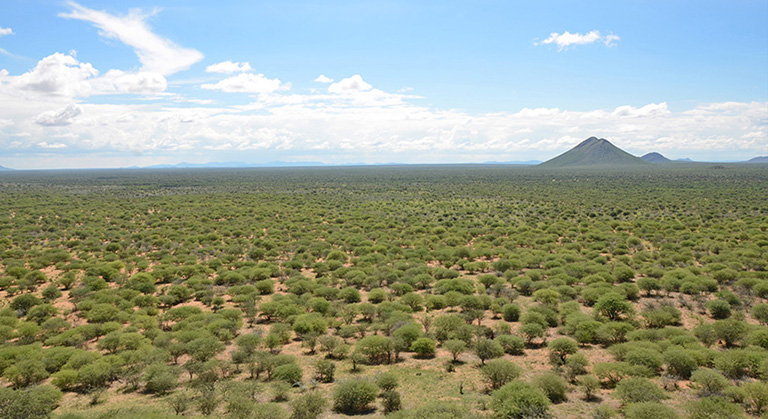
THE HISTORY OF ERINDI PRIVATE GAME RESERVE
European traders and missionaries were the first recorded people who travelled through the area of Namibia that now contains Erindi, probably from Walvis Bay northwards in the direction of Ovamboland in the mid-1800s. But evidence shows that other people used to inhabit this land such as the indigenous Herero and San tribes. There are signs of seasonal Herero farmers having moved through the area, as well as significant San rock paintings and engravings on “Big Bushman” Mountain.
In 1986, the Joubert brothers bought the land from the Imperial Cold Storage and Supply Company (ICS). They were determined to turn it into a model cattle farm, so they invested money, time, and energy into the project. By the early 1990s, the brothers realized that to increase overall profitability of the farm, they would need to gradually start stocking the farm with game.
Natural food resources was a major concern, so to avoid competition with the cattle, they introduced plains game. They fenced 3 000 hectares and put 55 giraffes on it in 1992. This was a noticeably successful venture, so more game such as the Blue Wildebeest and African Elephant were brought in from Etosha National Park. The farm was already home to wild animals like the Gemsbok, Kudu, Leopard, Cheetah, Honey-Badger, Baboon and many others.
However, to concentrate fully on conservation and turn Erindi into a five-star ecotourism destination, the owners realized that the land would have to be briefly utilized for hunting purposes. A four-year period as a trophy hunting outfitter helped to raise the much-needed funds to continue their conservation dreams. Cattle farming had been completely phased out, and the reserve had been fitted with all the game management requirements. By 2008, Old Traders Lodge was erected and open for visitors. Since then, Camp Elephant was constructed, and several successful conservation programs run concurrently.



